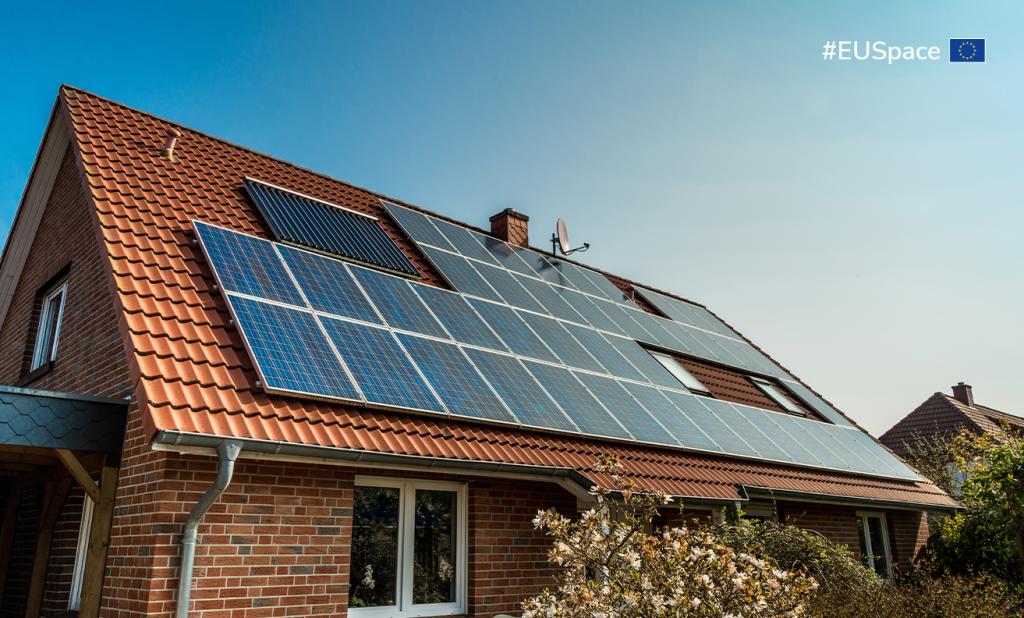Solar Synergy: How Copernicus Data Powers Smarter Grid Balancing

As the energy transition accelerates, grid operators face increasing challenges with integrating renewable energy in their networks and accurately forecasting energy production. Many transmission system operators, such as France’s Réseau de Transport d'Electricité (RTE), struggle with obtaining reliable production readings for a significant portion of small-scale solar voltaic assets connected to their networks. This uncertainty directly impacts their ability to manage electricity supply and demand efficiently and scale up their solar energy operations. EUSPA identified this area for its Proof-of-Concept (POC) process, where Copernicus data enables solutions that meet real-world user needs.
A key issue is determining margins, the reserve power capacity that can be mobilised within minutes to respond to sudden demand surges or changes. When solar photovoltaic (PV) output is uncertain, operators must maintain larger margins, which increases investment requirements and operational costs. Improving the accuracy of small-scale solar PV yield forecasts allows Transmission System Operators (TSOs) to improve their demand forecasting, reduce reserve capacity needs and enhance overall grid stability.
A data-driven solution for solar PV forecasting
To address this issue, Paris-based ARMINES has developed an advanced application powered by Copernicus Atmosphere Service (CAMS) and Copernicus Climate Change Service (C3S) data. The core innovation, “solar radiation as a service," is an interactive, GIS-based platform designed to deliver high resolution solar mapping in near real time. Its robust ability to estimate shading impacts on solar energy generation is a key strength. The overall results are valuable for RTE and similar users because the balance between supply and demand is well documented. More precise solar PV production forecasts result in lower margin requirements, optimising reserve power capacity and saving costs.
Unlike traditional static solar cadastres that provide only annual averages of solar irradiation on rooftops, this dynamic platform computes intraday solar PV output on various tilted planes. It assesses not only rooftops but also alternative solar-friendly surfaces such as parking canopies, roadside spaces and open areas near residential buildings. Incorporating diverse spatial configurations significantly enhances the accuracy of solar energy production estimates.
The integration of Copernicus data plays a crucial role in refining solar PV forecasting. By utilising CAMS solar radiation data sets, spanning from 2004 to the present, the application provides time series data with high temporal resolution capturing variations in solar exposure under clear sky and some all-sky conditions.
Additionally, the ERA5 reanalysis dataset from ECMWF enhances energy yield modelling with hourly estimates of temperature and wind speed. These factors directly influence PV system performance, offering an improved representation of real-world conditions affecting solar energy generation in the application’s inputs. The combination of these datasets enables a highly accurate assessment of localised solar PV production potential, reducing forecasting errors that currently impact TSO operations.
Unlocking market opportunities for TSOs
This EUSPA proof of concept (POC) demonstration highlights how TSOs can use applications powered by Copernicus data to refine their estimates of aggregated small scale solar PV production within their control zones. By improving forecast reliability, grid operators can better integrate distributed solar generation into their planning and distribution strategies. This enhanced visibility helps reduce the need for excessive balancing reserves leading to significant cost savings and increased grid efficiency.
A scalable solution for future energy grids
As solar PV capacity continues to expand in the transition to a decarbonised energy supply, precise PV power generation forecasting is crucial to maintain grid stability. The improved accuracy offered by this Copernicus powered solution enables more effective energy management, minimising uncertainty and reducing unnecessary operational expenditures. All interested potential users and providers are encouraged to follow EUSPA’s market development activities.
More information can be found at EU Space market and users.
Media note: This feature can be republished without charge provided the European Union Agency for the Space Programme (EUSPA) is acknowledged as the source at the top or the bottom of the story. You must request permission before you use any of the photographs on the site. If you republish, we would be grateful if you could link back to the EUSPA website.